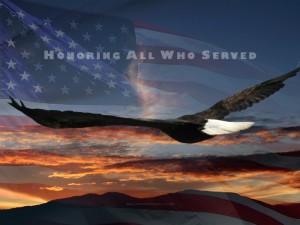Class Of 1966
El Paso High School
In Perpetual Memory of El Paso High School Former Students Killed-In-Action During the Vietnam War
Euardo "Eddie" Ayala Roberto J. Macias
Rafael Chavez William Manzanares, Jr1
Mark Dalgliesh Enrique Martinez
Jesus Armando Gonzales Alfredo "Freddie" Ochoa, Jr2
Ramon N. Hernandez Alfredo Vicente Reyes
Jose Holguin, Jr Alfredo Rivera
Augustin Lopez, Jr Michael G. Taylor
Oscar Valenzuela, Jr3
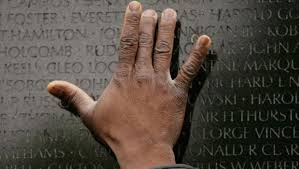
Touch "The Wall" With Reverence
1 Brother of EPHS66 Classmate Luis Manzanares
2 Brother of EPHS66 Classmate Irene Ochoa Sanchez
3 EPHS66 Classmate moved to Oakland, CA, prior to graduation
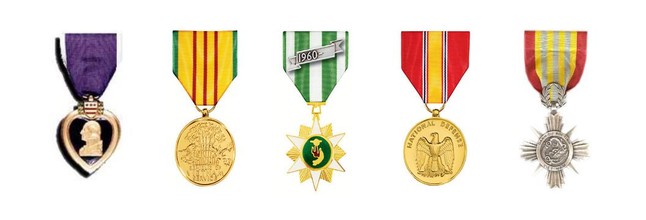
Left to Right: US Purple Heart Medal; US Vietnam Service Medal; US Vietnam Campaign Medal; US National Defense Service Medal; Republic of Viet Nam Armed Forces Homor Medal
In everlasting tribute to classmates of the EPHS Class of 1966 who served honorably the Armed Forces of the United Stated of America during the Vietnam War Era: those who fell on the battle fields; those who survived warfare in Southest Asia but succumbed in later years; those who returned and continue to embrace life; and to their families who hope, pray, endure, and support.
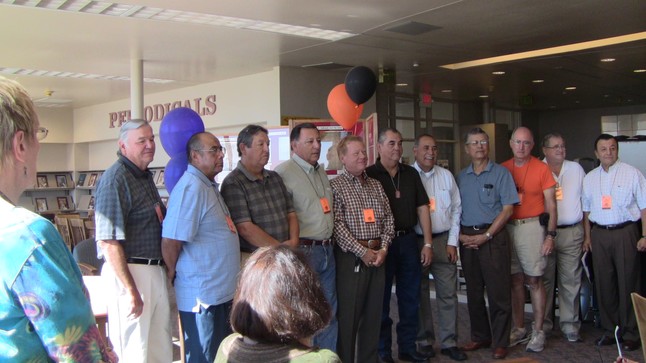
Vietnam War Veterans at EPHS66 Reunion 2011: Larry Peterson, Ramon Rosales*, David Mendez, Richard Ganem, Jerry Guthrie, Ruben Andrade, Fernando Lopez, Reynaldo Leyva, Steven Blumenthal, David Jacobson, Ray Rodriguez.
* USS Pueblo, Prisoner of War in the People's Democratic Republic of Korea, Jan-Dec 1968
Memorial Day 2015
The video below is of particular significance because EPHS66 Classmate Albert Miranda was among the US Marines who defended Khe Sanh during the siege by North Vietnamese Army units which began on 21 January 1968 and lasted for 77 days without cessation. The message applies to all who undergo the ravages of warfare and those who welcome them home. This clip is an excerpt from The National Memorial Day Concert on PBS, Memorial Day, 2012.
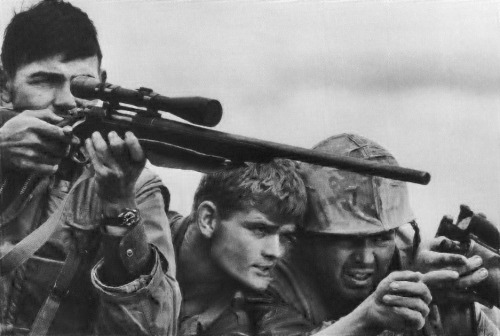
Then 19-years old, LCPL Albert Miranda, USMC, with sniper rifle at the Battle of Khe Sanh, 1968.
Photo by David Douglas Duncan / Life. 23 Feb. 1968. p. 27
In Flander's Field by John McCrae In Flanders Fields the poppies blow, Between the crosses, row on row, That mark our place; and in the sky, The larks, still bravely singing, fly, Scarce heard amid the guns below. We are the dead. Short days ago, We lived, felt dawn, saw sunset glow, Loved and were loved and now we lie, In Flanders Fields. Take up our quarrel with the foe To you, from failing hands, we throw, The torch, be yours to hold it high. If ye break faith with us, who die, We shall not sleep, though poppies grow, In Flanders Fields.
History of Veterans Day
World War I – known at the time as “The Great War” - officially ended when the Treaty of Versailles was signed on June 28, 1919, in the Palace of Versailles outside the town of Versailles, France. However, fighting ceased seven months earlier when an armistice, or temporary cessation of hostilities, between the Allied nations and Germany went into effect on the eleventh hour of the eleventh day of the eleventh month. For that reason, November 11, 1918, is generally regarded as the end of “the war to end all wars.”
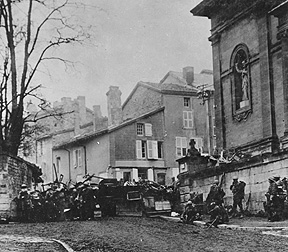
Soldiers of the 353rd Infantry near a church at Stenay, Meuse in France, wait for the end of hostilities. This photo was taken at 10:58 a.m., on November 11, 1918, two minutes before the armistice ending World War I went into effect
In November 1919, President Wilson proclaimed November 11 as the first commemoration of Armistice Day with the following words: "To us in America, the reflections of Armistice Day will be filled with solemn pride in the heroism of those who died in the country’s service and with gratitude for the victory, both because of the thing from which it has freed us and because of the opportunity it has given America to show her sympathy with peace and justice in the councils of the nations…"
The original concept for the celebration was for a day observed with parades and public meetings and a brief suspension of business beginning at 11:00 a.m.
The United States Congress officially recognized the end of World War I when it passed a concurrent resolution on June 4, 1926, with these words:
Whereas the 11th of November 1918, marked the cessation of the most destructive, sanguinary, and far reaching war in human annals and the resumption by the people of the United States of peaceful relations with other nations, which we hope may never again be severed, and
Whereas it is fitting that the recurring anniversary of this date should be commemorated with thanksgiving and prayer and exercises designed to perpetuate peace through good will and mutual understanding between nations; and
Whereas the legislatures of twenty-seven of our States have already declared November 11 to be a legal holiday: Therefore be it Resolved by the Senate (the House of Representatives concurring), that the President of the United States is requested to issue a proclamation calling upon the officials to display the flag of the United States on all Government buildings on November 11 and inviting the people of the United States to observe the day in schools and churches, or other suitable places, with appropriate ceremonies of friendly relations with all other peoples.
An Act (52 Stat. 351; 5 U. S. Code, Sec. 87a) approved May 13, 1938, made the 11th of November in each year a legal holiday—a day to be dedicated to the cause of world peace and to be thereafter celebrated and known as "Armistice Day." Armistice Day was primarily a day set aside to honor veterans of World War I, but in 1954, after World War II had required the greatest mobilization of soldiers, sailors, Marines and airmen in the Nation’s history; after American forces had fought aggression in Korea, the 83rd Congress, at the urging of the veterans service organizations, amended the Act of 1938 by striking out the word "Armistice" and inserting in its place the word "Veterans." With the approval of this legislation (Public Law 380) on June 1, 1954, November 11th became a day to honor American veterans of all wars.
Later that same year, on October 8th, President Dwight D. Eisenhower issued the first "Veterans Day Proclamation" which stated: In order to insure proper and widespread observance of this anniversary, all veterans, all veterans' organizations, and the entire citizenry will wish to join hands in the common purpose. Toward this end, I am designating the Administrator of Veterans' Affairs as Chairman of a Veterans Day National Committee, which shall include such other persons as the Chairman may select, and which will coordinate at the national level necessary planning for the observance. I am also requesting the heads of all departments and agencies of the Executive branch of the Government to assist the National Committee in every way possible.
On that same day, President Eisenhower sent a letter to the Honorable Harvey V. Higley, Administrator of Veterans' Affairs (VA), designating him as Chairman of the Veterans Day National Committee.
In 1958, the White House advised VA's General Counsel that the 1954 designation of the VA Administrator as Chairman of the Veterans Day National Committee applied to all subsequent VA Administrators. Since March 1989 when VA was elevated to a cabinet level department, the Secretary of Veterans Affairs has served as the committee's chairman.
Veterans Day continues to be observed on November 11, regardless of what day of the week on which it falls. The restoration of the observance of Veterans Day to November 11 not only preserves the historical significance of the date, but helps focus attention on the important purpose of Veterans Day: A celebration to honor America's veterans for their patriotism, love of country, and willingness to serve and sacrifice for the common good.
Source: US Department of Veterans Affairs

